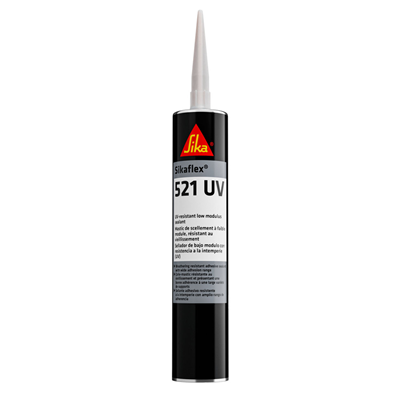SIKAFLEXL521UV LIGGREY C5003 /20 UP600
Item #:
86881468
Product Info
106097
SIKA
SIKAFLEXL521UV LIGGREY C5003 /20 UP600
Sika 106097 Sikaflex-521 UV Light Gray C5003; 20 Unipack 600 = 1 Case
Sikaflex®-521 UV - WEATHERING-RESISTANT STP ADHESIVE SEALANT WITH A WIDE ADHESION RANGE
PRODUCT BENEFITS
- Aging and weathering-resistant
- Bonds well to a wide variety of substrates without the need for special pre-treatment
- Isocyanate- and solvent-free
- Can be painted
- Can be sanded
- Low odor
Usage
Sikaflex®-521 UV adheres well to a wide variety of substrates and is suitable for elastic sealing and bonding. Suitable substrate materials include timber, metals, metal primers and paint coatings (2-component systems), ceramic materials and plastics. This multipurpose product is suitable for internal and external sealing applications. Seek manufacturer’s advice and perform tests on original substrates before using Sikaflex®-521 UV on materials prone to stress cracking. This product is suitable for experienced professional users only. Test with actual substrates and conditions have to be performed to ensure adhesion and material compatibility.
Packaging
- Cartridge 300 ml
- Unipack 600 ml
| Chemical base | Silane Terminated Polymer |
| Color (CQP001-1) | White, grey |
| Cure mechanism | Moisture-curing |
| Density (uncured) (depending on color) | 1.4 kg/l (11.7 lb/gal) |
| Non-sag properties | Good |
| Application temperature (ambient) | 5 - 40 °C (41 - 104 °F) |
| Skin time (CQP019-1) | 30 minutesA |
| Curing speed (CQP049-1) | (see diagram 1) |
| Shrinkage (CQP014-1) | 2 % |
| Shore A hardness (CQP023-1 / ISO 48-4) | 40 |
| Tensile strength (CQP036-1 / ISO 527) | 1.8 MPa (260 psi) |
| Elongation at break (CQP036-1 / ISO 527) | 400 % |
| Tear propagation resistance (CQP045-1 / ISO 34) | 5.5 N/mm (30 pli) |
| Service temperature (CQP513-1) (4 hours) | -50 - 90 °C (-58 - 194 °F) |
| Service temperature (CQP513-1) (1 hour) | 140 °C (284 °F) |
| Shelf life (cartridge / unipack) | 12 monthsB |
Call for Pricing
NOT IN STOCK
UOM : CS (20 EA)
QTY:



